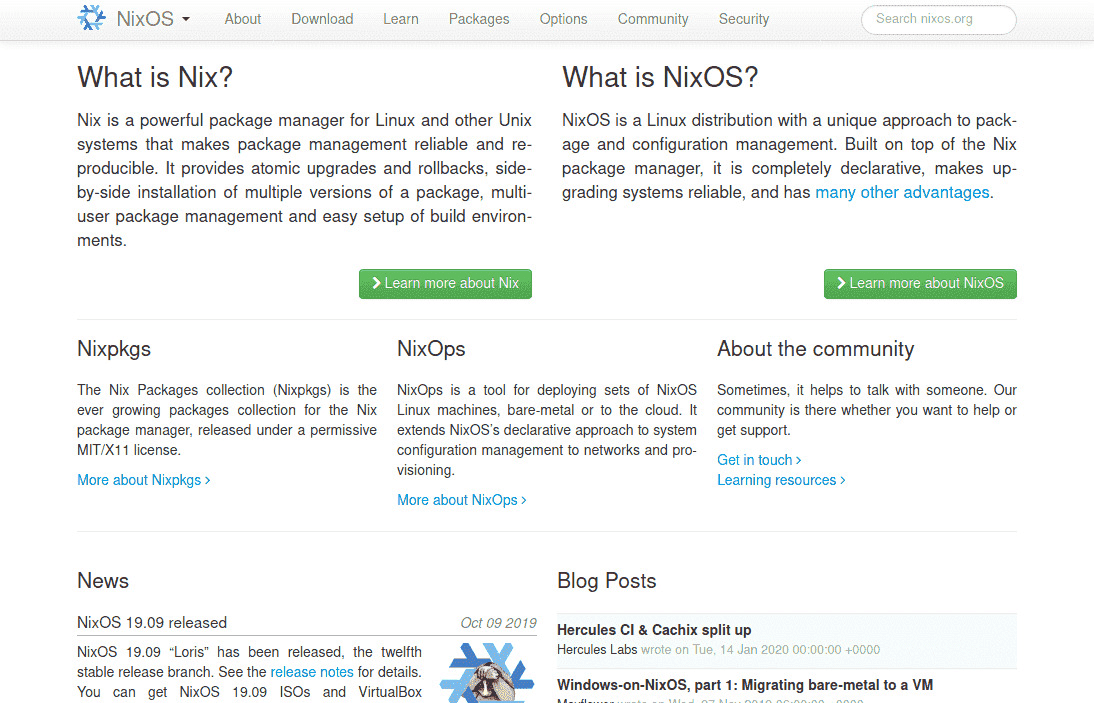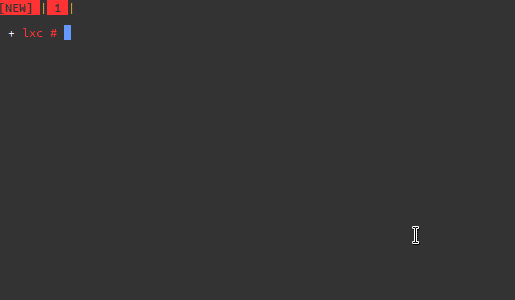Running NixOS in a Linux Container
init and the init path lxc expects across multiple
NixOS versions. See this
thread
for a possible fix.

NixOS Home PageNixOS is seen as the holy grail of
[pdf]. The state is declarative — entire systems, deployment artifacts, or
services can be built from a single file.
Let’s try out NixOS in a
LXC or LXD
setup with networking.
LXC). The NixOS Hydra
builds
(aarch64)
provide container images but they don’t seem to
rootfs (file system).
Bootstrapping
The best way to get a NixOS root file system is to bootstrap using
nixos-generate.
This will require a live NixOS environment or
installing nix onto your Linux
distribution. Download the latest
NixOS minimal image and boot
into the live environment using preferred means.
nix-shell or
flake configuration.
nix, bootstrap a Linux
container’s rootfs using nixos-generate.
shell
nixos-generate --format lxcshell
nixos-generate --format lxc --configuration configuration.nixIf the command
nixos-generate
is not found — install nixos-generators using
nix-env or
nix-shell.
shell
nix-env -iA nixos.nixos-generatorsshell
nix-shell --packages nixos-generatorsOnce completed, this command will print a hashed path like
/nix/store/3ipfpzhk4dllwhcnldsbfldi1favyxsm-tarball/nix-support/hydra-build-products.
This file contains the location of the rootfs archive.
shell
$ cat /nix/store/3ipfpzhk4dllwhcnldsbfldi1favyxsm-tarball/nix-support/hydra-build-products
file system-tarball /nix/store/3ipfpzhk4dllwhcnldsbfldi1favyxsm-tarball/tarball/nixos-system-x86_64-linux.tar.xzSave the generated archive nixos-system-x86_64-linux.tar.xz and exit the live
environment.
Setup the Linux Container
Now that we have a clean rootfs archive. Create an empty linux container and
rootfs directory. Extract nixos-system-x86_64-linux.tar.xz to rootfs.
shell
lxc-create -n nixos -t none
cd /var/lib/lxc/nixos
mkdir rootfs
tar -xvf nixos-system-x86_64-linux.tar.xz -C rootfs/Let’s massage our
Debian and Arch Linux.
NixOS at /var/lib/lxc/nixos/config. The entry point is /sbin/init.
ini
# Distribution configuration
lxc.arch = linux64
lxc.include = /usr/share/lxc/config/common.conf
# Container specific configuration
lxc.uts.name = nixos
lxc.rootfs.path = dir:/var/lib/lxc/nixos/rootfs
# Network configuration
lxc.net.0.type = veth
lxc.net.0.link = lxcbr0
lxc.net.0.flags = up
lxc.net.0.hwaddr = 00:16:3e:01:77:76
# NixOS configuration
lxc.init.cmd = /sbin/initSetup and Run NixOS
Now

NixOS container setup
lxc-attach.
shell
lxc-start -n nixos
lxc-attach -n nixosThe default /etc/nixos/configuration.nix is empty. Tell NixOS that we are a
container by adding boot.isContainer = true.
nix
{ config, pkgs, ... }:
{
imports = [ ];
boot.isContainer = true;
}Now run a
iptables filters for IPv6 mean you either run an old
kernel or you need to sudo
modprobe ip6table_filter
shell
nixos-rebuild switch --upgradeWe now have a base NixOS system in a Linux container. You can build
reproducible desktops, servers, deployment artifacts — anything, using your
own configuration.nix and consulting the
NixOS options index. This approach is
great because when you make something it just works — all the time.